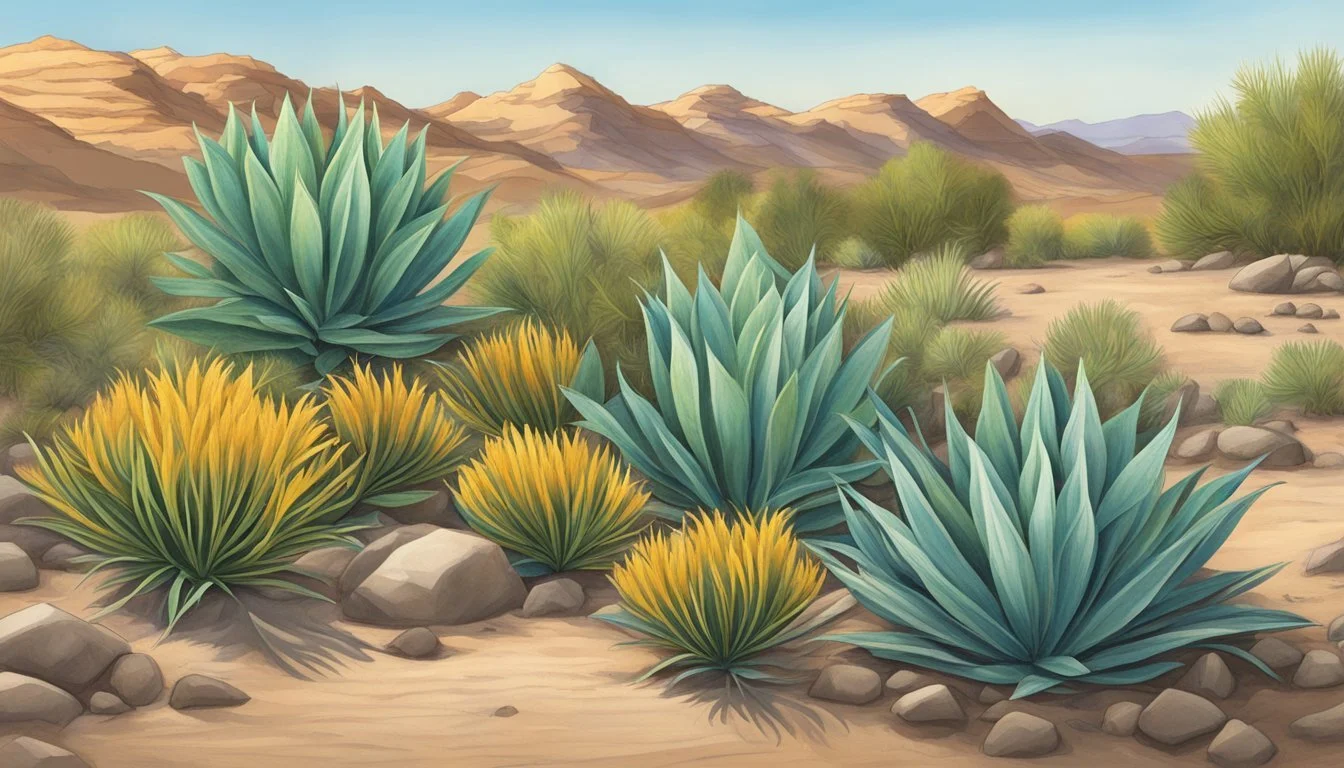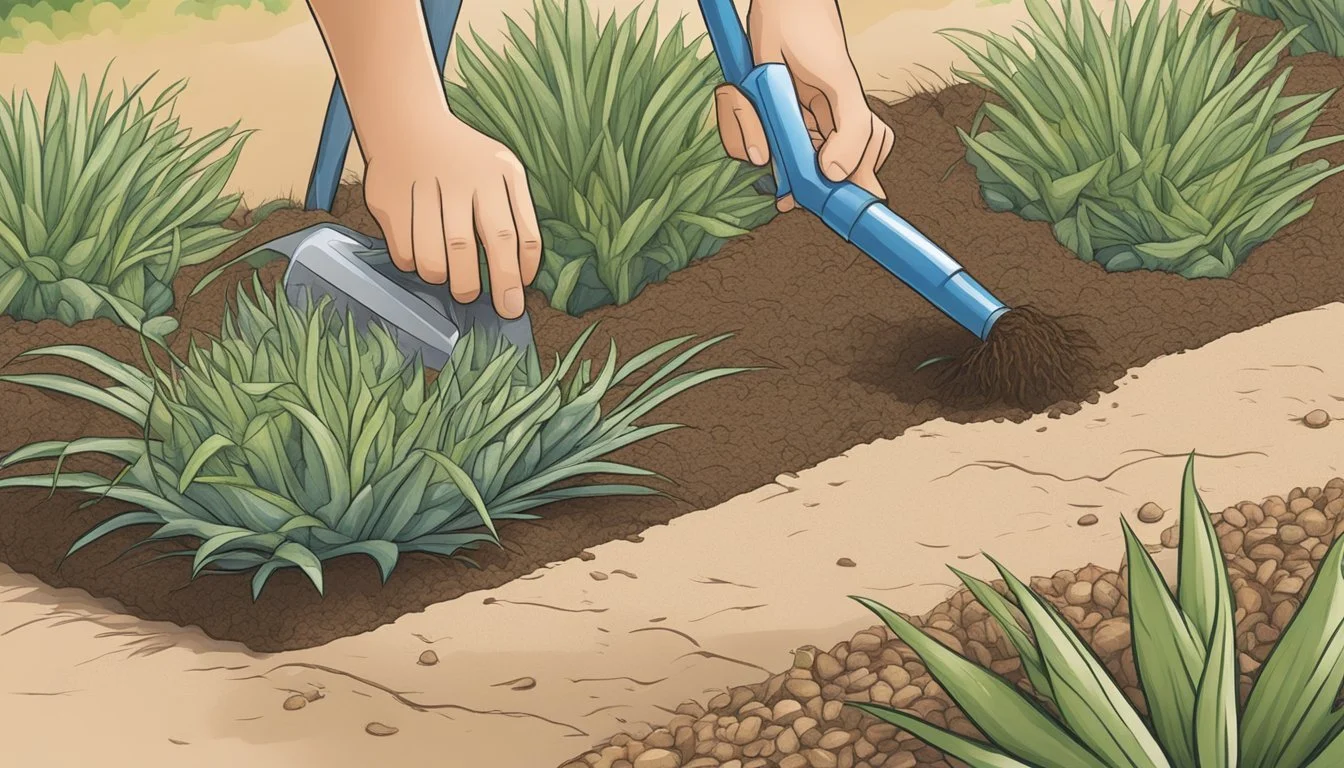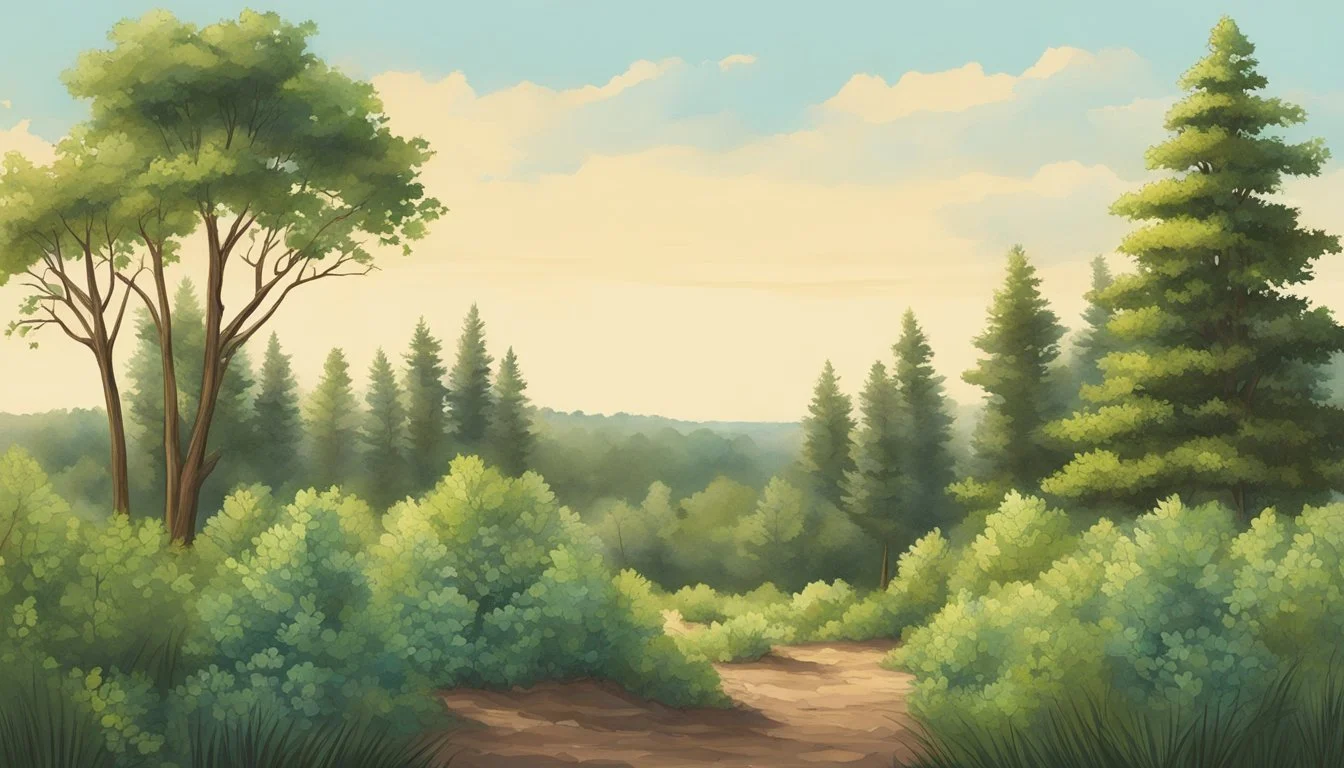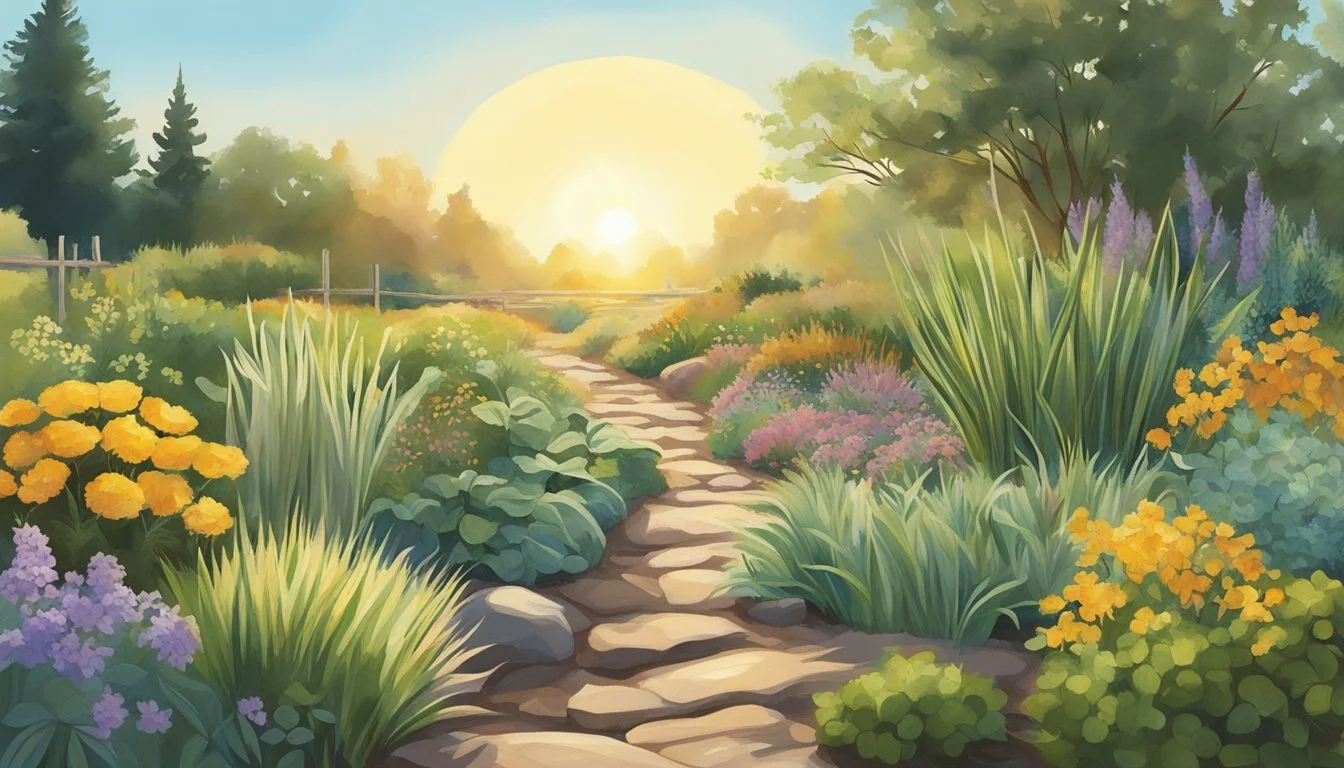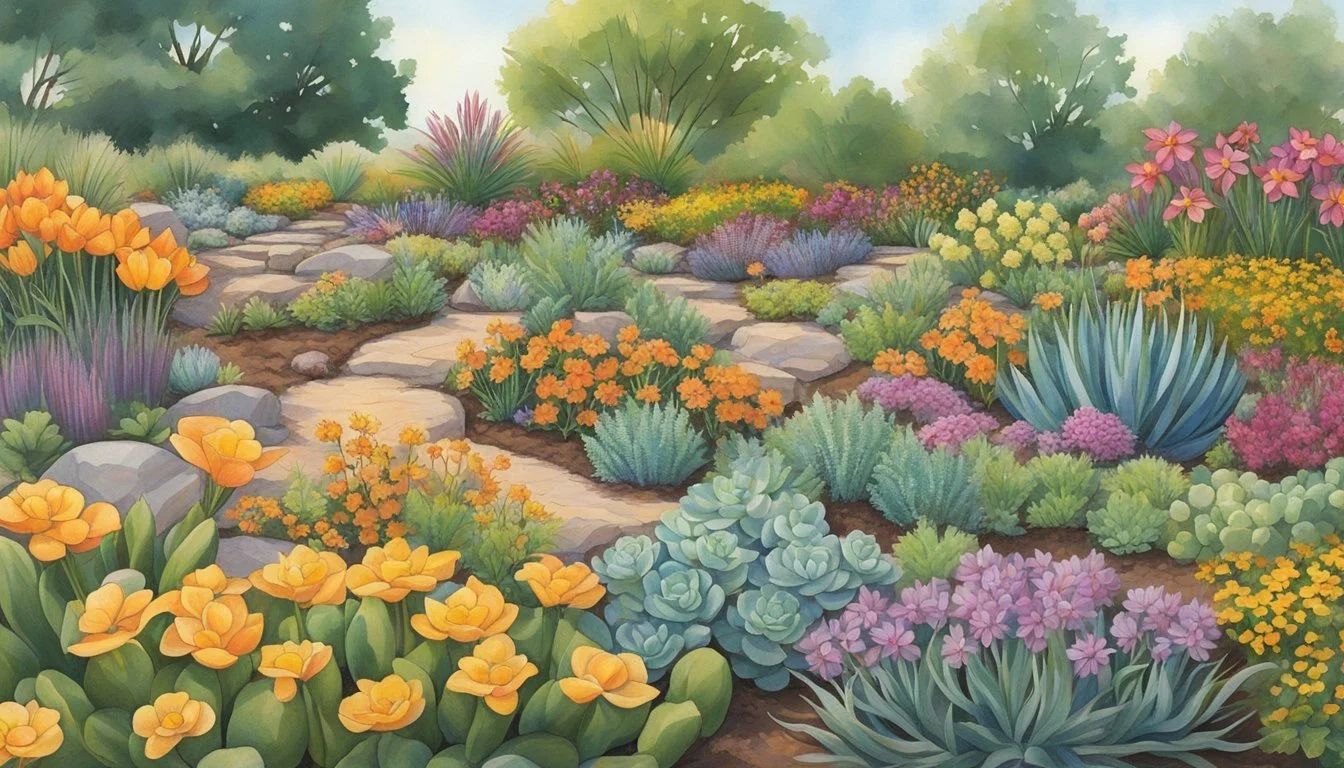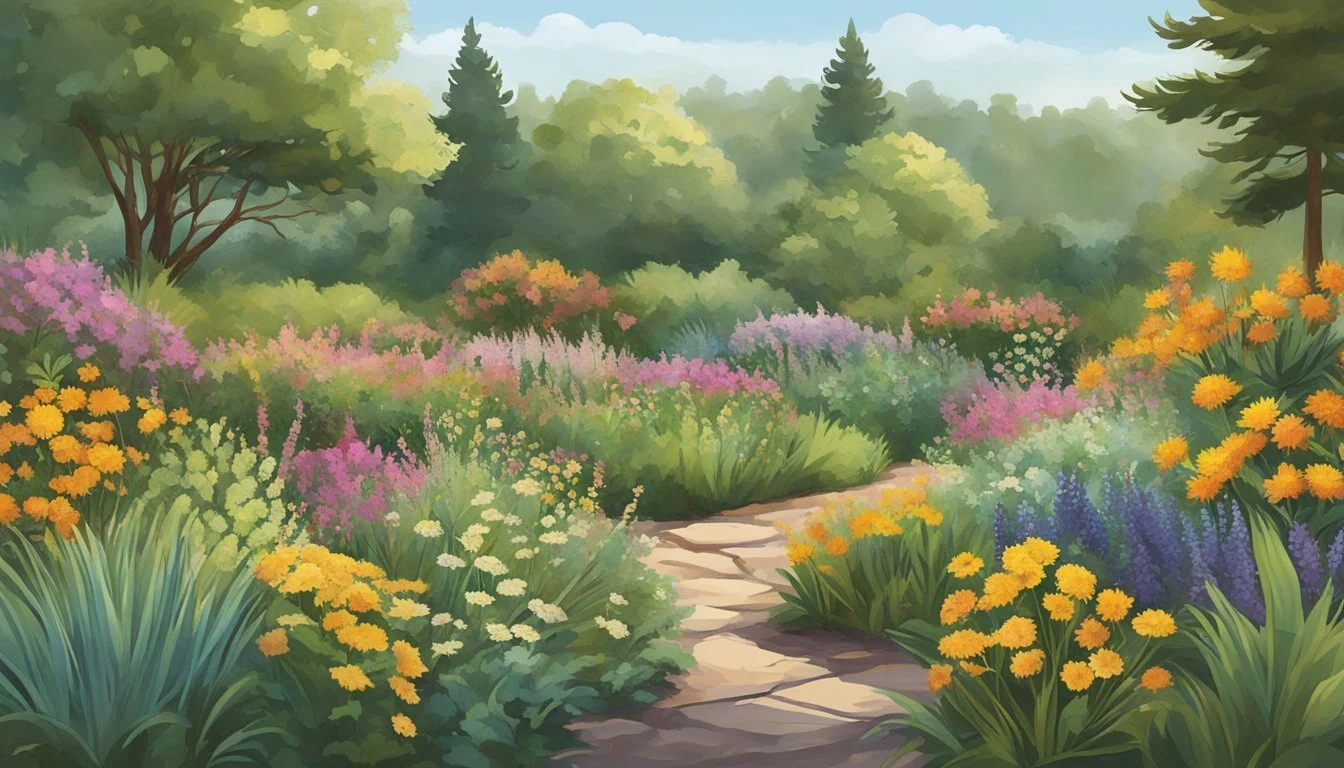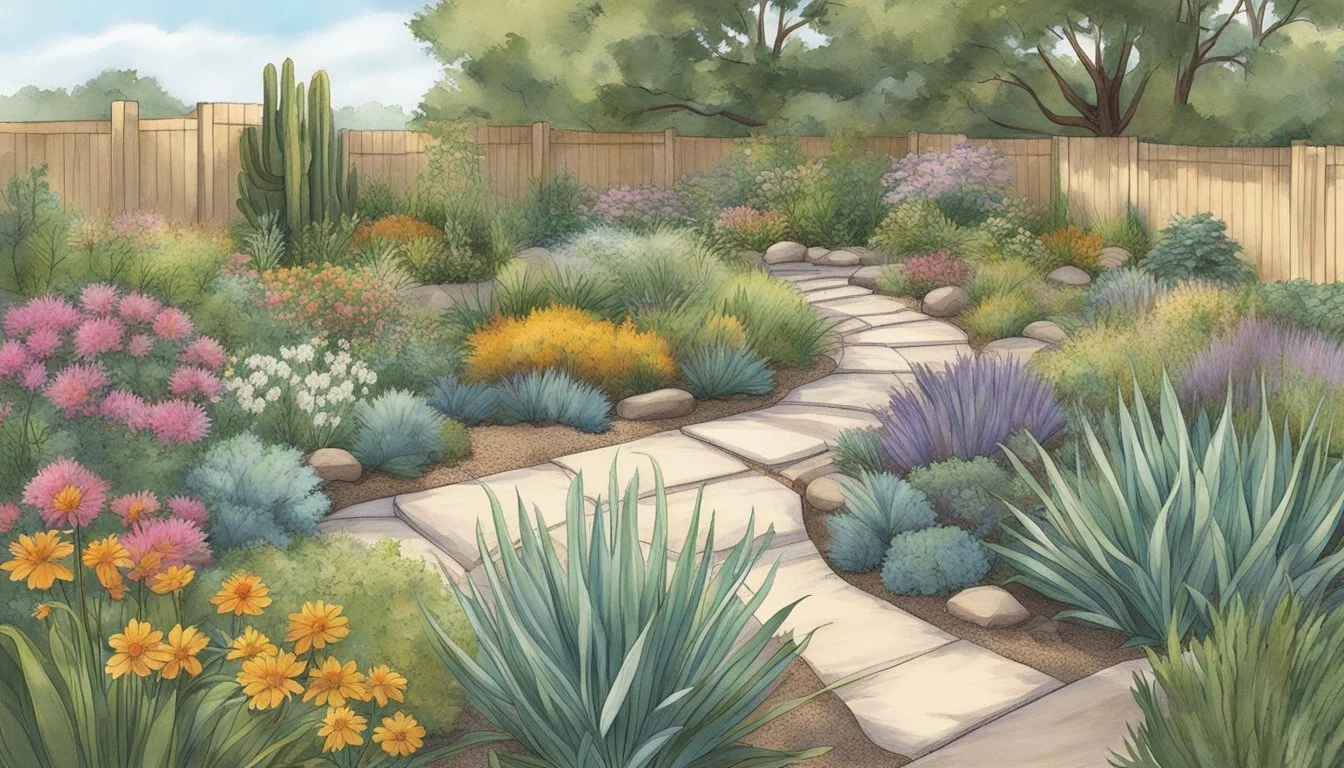Drought-Tolerant Plants in Minnesota
Thriving Species for Arid Climates
Drought-tolerant plants are essential for Minnesota's diverse climate, which includes hot summers and cold winters. Gardeners in the state face unique challenges when it comes to maintaining a beautiful landscape that can withstand periods of low rainfall. Selecting the right plants for these conditions not only ensures the survival of the garden but also conserves water and reduces maintenance.
Minnesota's extension service provides insight into the best plants for tough garden sites, such as dry shade, sloping terrain, and lakeshores, where plants must be particularly resilient. Examples include species that thrive in existing soil types without requiring extensive irrigation or care. These plants often have deep root systems and leaves adapted to conserve water, making them ideal for Minnesota's periods of drought.
Incorporating drought-tolerant plants into a garden in Minnesota is not only about survival; it also offers an opportunity to create a sustainable and eco-friendly outdoor space. By choosing plants that are naturally adapted to the local climate and soil conditions, gardeners can enjoy a thriving garden that contributes to the well-being of the local ecosystem.
Understanding Drought-Tolerant Plants
Drought-tolerant plants are crucial for the challenging climate in Minnesota, ensuring survival in variable moisture conditions and hardiness zones.
Defining Drought Tolerance
Drought tolerance refers to a plant's ability to withstand dry conditions for a prolonged period. These species possess adaptations that reduce water loss and improve water uptake. In Minnesota's varying hardiness zones, ranging typically from zones 3 to 5, such adaptations are essential. These plants often exhibit characteristics like deep root systems, reduced leaf area, and waxy or hairy green foliage to minimize water loss.
Importance for Minnesota Landscapes
In Minnesota, where drought conditions can fluctuate seasonally, incorporating drought-tolerant plants is a strategic approach to landscaping. These plants not only provide a green foliage backdrop throughout the year but also reduce the need for irrigation. This adaptation is critical for maintaining healthy, sustainable gardens and landscapes, particularly in the arid regions of Minnesota where water conservation is a priority.
Selecting the Right Plants for Your Garden
When planning a garden in Minnesota, one must thoughtfully select plants based on their compatibility with the local climate and soil conditions. Ensuring that your garden thrives involves careful consideration of the plant's sun exposure requirements and the soil's ability to retain or drain moisture.
Criteria for Selection
Selecting the right plants for a Minnesota garden begins with understanding which species are drought-tolerant and suitable for the climate extremes. Drought-tolerant plants such as sedum, liatris, and purple coneflower are known to perform well with less water and can sustain the hot, dry summer spells. It's essential to choose plants that are adapted to the cold winters as well, with solid resistance to freezing temperatures.
Full Sun Plants: These should be capable of thriving in six or more hours of direct sunlight each day.
Partial Sun Plants: These require sunlight for approximately half of the day or need protection from intense afternoon sun.
Soil Preference: While some plants may be versatile, others might need specific soil types, such as well-drained or moist soils, to flourish.
Analyzing Soil and Sun Requirements
Before planting, one must determine the sun exposure of the garden area. Areas that receive more than six hours of direct sunlight are classified as full sun, making them ideal for plants like black-eyed Susan and thread leaf coreopsis. Partial sun areas, with three to six hours of sun, or which are shaded during the intense midday heat, can accommodate a different range of plants, including various sedums and goldenrods.
Regarding soil, the key is to aim for a well-drained soil, ensuring that standing water does not damage roots, especially in winter when freeze-thaw cycles are common. The soil should be tested for drainage capability and, if necessary, amended with organic material to improve its structure. For areas where soil remains moist, consider plants that can tolerate these conditions without succumbing to rot.
For full sun and well-drained soil:
Sedum (Sedum spp.)
Black-eyed Susan (Rudbeckia spp.)
For partial sun and moist conditions:
Goldenrod (Solidago spp.)
Liatris (Liatris spicata)
By addressing these criteria, Minnesota gardeners can make informed decisions that lead to a successful and thriving drought-resistant landscape.
Preparation and Planting Techniques
Before diving into the detailed processes of planting in Minnesota's tough climate, one should understand the importance of two critical steps: soil preparation and planting strategies. The right approach can maximize the chance of successful growth for drought-tolerant plants in this region.
Soil Preparation
The first step in establishing a resilient garden in Minnesota is soil preparation. Proper soil prep lays the foundational support plants need to thrive under drought conditions. To start, gardeners should:
Incorporate organic matter: This enhances soil structure, improves water retention, and provides essential nutrients. Aim for a 4-6 inch layer of well-rotted compost mixed into the top 12 inches of soil.
Test soil pH and quality: Adjust the soil pH according to the needs of the plants you are introducing. Drought-tolerant plants often require well-drained soil, which can be achieved by ensuring proper balance.
Apply mulch: A 2 to 3-inch layer of organic mulch like straw, wood chips, or leaves should be laid around the plants. This helps in water preservation, temperature regulation, and reducing weed competition.
Planting Strategies
When planting drought-tolerant species, timing and technique are key. They require strategies that optimize their adaptation and growth with minimal water usage:
Plant in the right season: The best time for planting is during the cooler seasons, either spring or fall. This allows plants to establish roots without the stress of high heat.
Watering wisely: Although these plants are drought-tolerant, initial watering is crucial for establishment. Water deeply to encourage deep root growth, then taper off as plants adapt.
Spacing: Ensure proper spacing between plants to reduce competition for resources and improve air circulation, which minimizes the risk of disease.
By following these targeted preparation and planting techniques, gardeners in Minnesota can cultivate a lush and sustainable landscape even in challenging dry conditions.
Perennials for Resilient Landscapes
Creating a drought-tolerant garden in Minnesota doesn't mean sacrificing beauty. The following sections outline specific perennials that thrive in low-water conditions, ensuring a resilient and vibrant landscape.
Aster Varieties
Asters are a diverse group of flowering plants offering a spectrum of colors for the resilient garden. New England Aster (Aster novae-angliae) is particularly well-suited for Minnesota's climate, displaying vibrant purple flowers that attract pollinators. Asters bloom in the late summer and fall, providing a critical food source for bees and butterflies preparing for migration or hibernation.
Sedums and Succulents
Sedums, sometimes referred to as stonecrops, are drought-tolerant succulents that add intriguing texture and variety to gardens. Notable for their fleshy leaves, Sedums store water to withstand dry spells. The Autumn Joy Sedum (Sedum spectabile), for instance, features robust pink flowers that mature to a rich bronze and require minimal watering once established.
Sedums:
Water needs: Low once established
Sun exposure: Full sun to partial shade
Soil preference: Well-draining
Native Grasses
Grasses are the backbone of a drought-resistant landscape. Little Bluestem (Schizachyrium scoparium) is a Minnesota native grass cherished for its adaptability and low maintenance. It offers striking blue-green foliage in the summer that turns a vivid rust color in the fall.
Little Bluestem Attributes:
Height: 2 to 4 feet
Drought resistance: High
Wildlife benefits: Provides habitat and food for native fauna
Choosing perennials like aster, sedum, and little bluestem will ensure that gardens are not only drought-tolerant but also support local ecosystems and wildlife.
Shrubs and Trees That Thwart Drought
In Minnesota, selecting the right trees and shrubs for landscaping is crucial due to the varying climate conditions. These drought-tolerant species are reliable choices for gardeners looking to establish resilient green spaces.
Drought-Resilient Tree Selection
When it comes to trees that can withstand dry spells, the Serviceberry (Amelanchier) shines due to its adaptability and ornamental qualities. It thrives in the variable Minnesota climate, offering white spring blossoms and edible fruit. Another hardy option is the Silver Maple (Acer saccharinum), which can reach heights of 45 to 75 feet and requires minimal water once established.
Shrub Varieties for Dry Conditions
For homeowners seeking shrubs that fare well in dry conditions, options include:
Weigela: A dependable shrub that presents vibrant flowers and can manage with infrequent watering.
Barberry (Berberis thunbergii): Known for its colorful foliage and ability to spread, this shrub endures drought well.
Both categories of plants offer not just drought resistance but also aesthetic appeal, enhancing the landscape even in times of low rainfall.
Attracting Wildlife with Drought-Tolerant Flora
Drought-tolerant plants are not only water-efficient but also excellent for attracting an array of wildlife. Incorporating species that provide nectar and seeds ensures thriving gardens even in drier climates.
Flowers for Pollinators
Flowers that thrive in arid conditions can be a haven for bees and butterflies, essential pollinators in any ecosystem. The Purple Coneflower (Echinacea purpurea), with its vibrant petals and nectar-rich center, is a reliable bloom that stands out in a water-conscious garden. Not only does it tolerate drought well, but it's also an attractive beacon for numerous pollinators:
Attracts: Bees, butterflies
Sun Requirements: Full sun
Height: Up to 5 feet
Hardiness Zones: 3-8
Allium (Allium sativum), another robust choice, repels deer and rodents while inviting pollinators to alight on its globe-shaped flowers. It’s perfect for gardeners seeking both form and function from their plant selections.
Plants for Birds and Butterflies
The diverse array of drought-resistant flora includes not only blooms for bees and butterflies but also plants that provide sustenance for birds, such as hummingbirds. The Yarrow (Achillea millefolium), with its feathery foliage and clusters of white to pink flowers, is a magnet for both beneficial insects and birds, offering a soft landing spot and a source of seeds:
Attracts: Butterflies, hummingbirds, birds
Sun Requirements: Full to partial sun
Height: 1 to 3 feet
Hardiness Zones: 3-9
Native wildflowers like the Aster serve as crucial late-season bloomers, sustaining wildlife when other food sources are scarce. These stars of the fall garden are dependable performers that ensure butterflies and other pollinators have ample resources before the winter sets in.
By choosing the right combination of these resilient plants, gardeners in Minnesota can enjoy a dynamic, wildlife-friendly garden that conserves water and supports local ecosystems.
Care and Maintenance of Drought-Resistant Plants
With a focus on sustainability and resilience, cultivating drought-tolerant plants in Minnesota encompasses practices that ensure their health and vigor, even under the challenging drought conditions these species are adapted to. The subsequent guidance zeroes in on watering strategies and pest management techniques essential for thriving landscapes.
Watering Wisely
Drought-tolerant plants necessitate a distinct watering regimen that differs from that of traditional garden species. During the establishment phase, they require consistent, yet moderately sparse, watering to develop deep root systems. Once established, these plants typically need minimal water, benefiting from occasional deep watering which encourages roots to reach further into the soil, enhancing drought resistance. It is crucial to water early in the day to minimize evaporation and to use soaker hoses or drip irrigation systems for efficiency.
Initial watering:
Consistent: Frequent enough to keep the soil moist to help roots establish.
Moderate: Avoid overwatering as it can damage the plants or inhibit root growth.
Ongoing watering:
Infrequent: Depending on the species and current weather patterns, it might only be required monthly or not at all.
Deeply: To promote robust root systems capable of accessing moisture lower in the soil profile.
Managing Pests and Disease
While drought-tolerant plants are generally hardy, they are not impervious to pests and diseases. Regular monitoring is key to early detection and intervention. Natural predators and beneficial insects should be encouraged as they are instrumental in controlling pest populations. For fungal diseases, which can be exacerbated by improper watering, ensuring proper air circulation around plants is vital. In case of a severe outbreak, the use of organic or chemical treatments should be considered as a last resort, always following the product's instructions.
Pest Management:
Utilize beneficial insects like ladybugs and lacewings.
Apply insecticidal soaps or neem oil for mild infestations, targeting only the affected areas.
Disease Control:
Improve air flow around plants by spacing them correctly and pruning when necessary.
Select organic fungicides or copper-based products to address fungal issues, if needed.
Innovative Gardening Practices
In the pursuit of sustaining green spaces amid water scarcity, gardeners in Minnesota are adopting innovative practices. These techniques are responsive to environmental challenges and support the conservation of resources.
Xeriscaping Principles
Xeriscaping, a concept originating in the arid west, emphasizes garden designs that require minimal irrigation. The University of Minnesota Extension suggests using native plants that are accustomed to local climate conditions and require less water. Key components of xeriscaping include:
Plant Selection: Choosing drought-resistant plants that thrive in Minnesota's climate.
Soil Improvement: Enhancing soil with organic matter to increase water retention.
Efficient Irrigation: Utilizing drip systems to deliver water directly to the plant roots.
Mulching: Covering soil with organic mulches to reduce evaporation and suppress weeds.
Sustainable Gardening Methods
Sustainable gardening goes beyond plant selection, embracing practices that foster a healthy ecosystem. The Extension promotes methods that are not only water-wise but also support biodiversity and soil health:
Water Conservation: Using rain barrels to collect and reuse rainwater for irrigation.
Natural Pest Control: Encouraging beneficial insects to reduce the need for chemical pest control.
Composting: Turning garden and kitchen waste into nutrient-rich compost to feed the soil.
Education: Leveraging resources like gardening workshops to inform the community about sustainable practices.
By implementing xeriscaping principles and sustainable methods, gardeners in Minnesota can create resilient and water-efficient landscapes. These practices illustrate a commitment to preserving natural resources while enjoying the beauty of a thriving garden.
A Guide to Color in Drought-Tolerant Gardens
Integrating color into drought-tolerant gardens in Minnesota can transform these landscapes from mere functional green spaces into vivid tapestries of hues. This guide focuses on the utilization of blooms and foliage to introduce a diverse color palette that is both resilient and captivating.
Blooms in Varied Hues
Drought-tolerant plants are not limited to a monochromatic display. They can offer beautiful flowers spanning a spectrum of colors. For instance, the Black-Eyed Susan adds a bold touch with its warm, yellow petals surrounding a dark brown center. It is complemented by the delicate pink blooms of the Autumn Joy Sedum, while the Russian Sage boasts spires of blue flowers that endure well into fall. These plants ensure a lively garden, bursting with colors even in challenging conditions.
Foliage as a Decorative Element
Foliage should not be overlooked as it brings a dynamic element to the drought-tolerant garden. Plants like the Blue Fescue grass introduce silvery-blue foliage, creating a stunning contrast against the warmer tones. Green foliage varieties, such as the Hens-and-Chicks succulent, offer a wide range of greens from deep emeralds to bright limes, which can be artfully arranged to form a visually soothing base for the garden's color scheme. These plants provide texture and form, serving as a backdrop that amplifies the impact of the flowering plants.
Landscaping for Different Conditions
Selecting appropriate plants for the varied light and soil conditions found in Minnesota landscapes ensures healthy growth and reduces maintenance needs. Tough sites such as full sun exposure, dry shade, and sloping terrains can benefit greatly from plants adapted to these specific environments.
Plants for Full Sun Areas
Full sun exposure refers to areas that receive direct sunlight for at least six hours a day. These locations often lead to drier soils and can be challenging for non-native plants. For successful landscaping in such areas, drought-tolerant plants are essential. A notable mention from the University of Minnesota includes species that are not only drought-resistant but also offer landscaping benefits such as minimal litter and long blooming periods.
Perennials: Some of the best perennials for full sun areas include:
Sedum (stonecrop)
Echinacea (coneflower)
Shrubs: For larger spaces, consider:
Juniperus (juniper)
Spiraea (spirea)
These species are recognized not just for their resilience but also for their ability to thrive without excessive watering, which conserves water and maintenance efforts.
Solutions for Dry Shade and Slopes
Dry shade areas are challenged by limited sunlight and moisture, necessitating plants that can tolerate such conditions. Slopes can compound these difficulties, as they often lead to rapid drainage and soil erosion. For gardeners dealing with such areas, the University of Minnesota Extension Service suggests plants with special traits to manage these tough sites.
Dry Shade Plants:
Lamium (dead nettle)
Aquilegia (columbine)
Slope Solutions:
Festuca (fescue grass)
Pachysandra (Japanese spurge)
These plants not only manage to survive under adverse conditions but can help to stabilize the soil and minimize erosion. Integrating them into landscaping projects makes for a reduced-maintenance garden that aligns with the local ecosystem's needs.
Annuals and Bulbs That Conserve Water
In Minnesota's varied climate, gardeners benefit from adding plants that require minimal watering. Annuals and bulbs that conserve water offer beauty without the need for frequent irrigation, suitable for the eco-conscious gardener or areas prone to drought.
Hardy Annual Varieties
For those seeking resilient color in their gardens, several annuals stand out for their drought tolerance. Moss Rose and Zinnia are two such annuals that not only bring a vivid display to gardens but also withstand dry spells. Gardeners can find a variety of annuals tailored for arid conditions; for instance, the African Daisy provides a striking presence. It requires moderate watering and timely deadheading during its flowering period. However, once established, these plants have a remarkable ability to thrive with minimal watering.
Drought-Resistant Annuals:
Moss Rose (Portulaca): Loves full sun and heats up to 3 inches tall.
Zinnia: Thrives in hot dry conditions, offering a multitude of colors.
African Daisy (Osteospermum spp.): Prefers full sun with moderate watering, suitable for zones 10 to 11.
Drought-Tolerant Bulbs
Bulbs can also play a role in a water-conscious garden. Gardeners might consider planting alliums, commonly known as ornamental onions, which are renowned for their easy care and low water requirements. Alliums come in a range of species, offering various sizes and colors of blooms that serve as focal points or accent plants. Once established, they tend to be quite hardy, making them an ideal choice for gardens in regions with unpredictable precipitation.
Drought-Tolerant Bulbs:
Allium (Various species): Requires well-drained soil, perfect for adding height and texture.
Extended Blooming and Aesthetic Considerations
Selecting plants for your garden that not only withstand dry conditions but also offer extended blooming periods and aesthetic appeal can enhance the garden’s beauty throughout the growing season. With thoughtful choices, gardeners in Minnesota can ensure a vibrant display even in the face of drought.
Plants with Long Blooming Periods
Gardeners should consider plants that provide long-lasting flowers to ensure a garden remains colorful and lively for as much of the growing season as possible. One such plant is the Moss Rose, praised for its ability to produce vivid blooms in a variety of colors over an extended season. This drought tolerant annual can bloom from early summer until the first frost, providing consistent color and interest. Another commendable choice is Russian Sage, which is renowned for its tricolor display of lavender-blue flowers, silvery foliage, and an impressively long blooming duration from midsummer to fall.
Creating Visual Interest Year-Round
A drought-tolerant garden in Minnesota isn't just about the flowers; it also involves considering the structure and height of plants, as well as the texture and color of their foliage. The strategic use of perennials with different heights can create a layered look that adds depth to the garden. For example, the blue-violet spires of Russian Sage can reach up to 4 feet in height, offering a visual anchor. To ensure year-round interest, mix in plants like Baby Pete Agapanthus, which displays attractive green foliage up to 24 inches wide and sky-blue flower clusters that maintain shape and color well into the colder months, according to Monrovia. By planning for a succession of blooms and considering leaf texture and color during non-blooming seasons, the garden can remain visually appealing all year.
Connecting with Local Resources
In Minnesota, efficient water management and the use of drought-tolerant plants are essential. Various local resources offer invaluable aid for individuals and communities looking to incorporate these plants into their landscapes.
University Extensions and Support
The University of Minnesota Extension serves as a pivotal resource for Minnesotans seeking guidance on drought-tolerant plants. It provides comprehensive materials on selecting and growing native plants in Minnesota, tailored to meet the specific needs of different landscapes. Through their expert advice, the extension supports the integration of resistant vegetation suited to the local climate, reducing the reliance on water-intensive care.
Community Gardening Initiatives
Community gardening initiatives across Minnesota encourage the use of native species adapted to the local environment. Regional programs, such as those highlighted by the Minnesota Board of Water and Soil Resources, often include workshops and planting guides. These initiatives also foster a sense of community as Minnesotans come together to conserve water resources and support biodiversity through sustainable gardening practices.
Glossary of Drought-Resistant Plant Terms
Drought Tolerance: A plant's ability to withstand dry conditions without significant damage to its growth or survival.
Xeriscaping: Landscaping designed specifically for areas that are susceptible to drought, using drought-resistant plants to reduce or eliminate the need for water irrigation.
Biomass Production: The amount of organic material that plants produce through photosynthesis, even under drought conditions. Plants that maintain high biomass production during droughts are highly valued in drought-prone areas.
Desiccation Tolerance: A plant's ability to withstand extreme dryness. These plants can survive despite losing most of their water content.
Term: Hardy
Definition: Plants able to survive across a range of environmental conditions, including drought.
Term: Water-Wise
Definition: Plants that require minimal watering once established.
Term: Native Species
Definition: Plants that naturally occur in a region; often more adapted to the local climate and soil conditions, including periods of drought.
Term Definition Hardy Plants able to survive across a range of environmental conditions, including drought. Water-Wise Plants that require minimal watering once established. Native Species Plants that naturally occur in a region; often more adapted to the local climate and soil conditions, including periods of drought.
Self-Seeding: Plants that propagate by dropping seeds that grow without manual sowing. Certain self-seeding plants are also drought-resistant, making them ideal for low-maintenance gardens in Minnesota.
Minimal Litter Trees: Trees that drop fewer leaves, seeds, and other debris, reducing the need for cleanup and water usage for maintenance. These can be an important part of a drought-tolerant landscape.
Frequently Asked Questions
In Minnesota, selecting drought-tolerant plants for your garden is essential due to the region's varying climate conditions. Understanding which plants can thrive with minimal water can lead to a sustainable and resilient landscape.
What are the best low maintenance perennials for dry conditions in Minnesota?
Low maintenance perennials suitable for dry conditions in Minnesota include species like Sedum (Stonecrop), which is well-known for its drought tolerance and minimal care requirements. Another excellent choice is the Echinacea (Purple Coneflower) that brings vibrant colors and hardiness to any low-water garden.
Can you suggest some native plants for Minnesota that are drought-resistant?
Native plants such as Little Bluestem and Butterfly Milkweed are not only resistant to drought but also contribute positively to local ecosystems. These drought-tolerant native plants are well-adapted to Minnesota's climate and provide essential habitat for wildlife.
Which yellow flowering plants are known for their drought tolerance in cold climates like Minnesota?
Yellow flowering plants such as Coreopsis (Tickseed) and Yarrow are renowned for their ability to withstand drought conditions while still adding a splash of bright color to gardens in cooler climates like Minnesota.
Are there any evergreen plants that can survive drought conditions in Minnesota?
Some evergreen plants can indeed survive drought conditions in Minnesota. Junipers and certain varieties of spruce can maintain their foliage throughout the year and are tough enough to cope with limited water availability.
What are the top drought-resistant plants suitable for full sun exposure in Minnesota?
For sunny areas in Minnesota gardens, plants like Daylilies and Sedum are among the top candidates that exhibit impressive drought resistance. They thrive in full sun and are able to withstand prolonged periods without water.
In Minnesota's climate, what perennials are known to withstand both high heat and low water conditions?
Perennials like Lamb's Ears and Russian Sage are acknowledged for persisting through both high heat and low water conditions in Minnesota. They are excellent choices for creating an attractive and resilient landscape in challenging environments.


